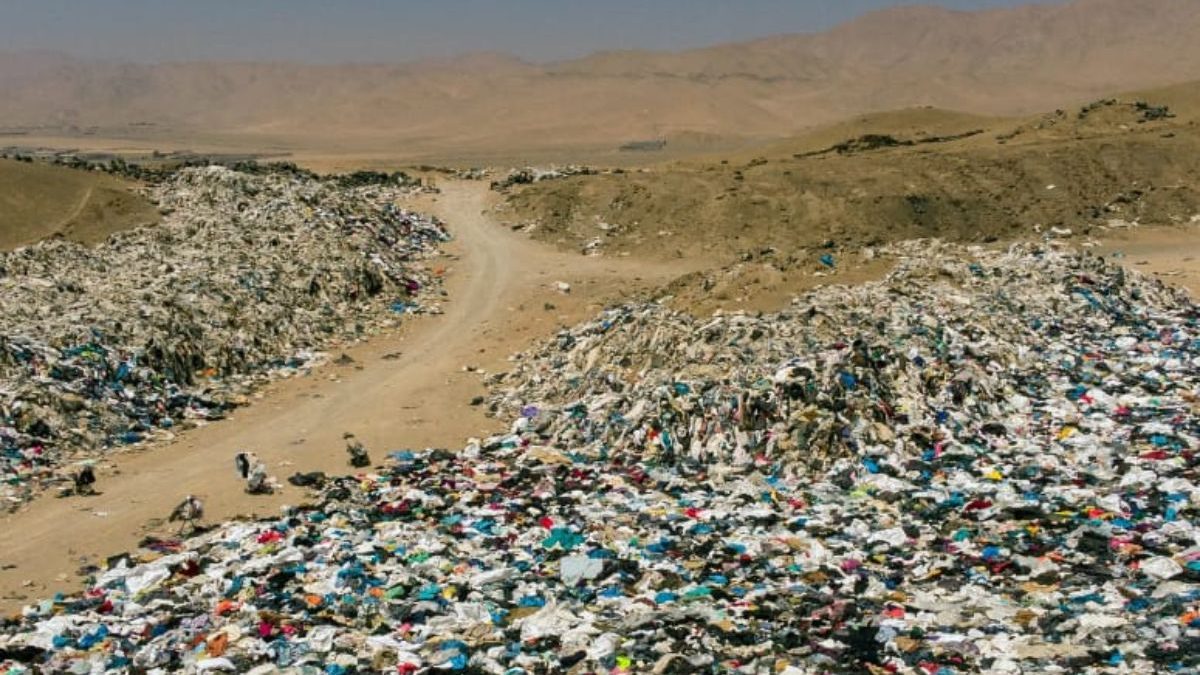Look at this image carefully. From a distance, it seems like a landfill full of garbage. But this is not garbage; these are clothes. Yes, clothes dumped in the Atacama Desert of Chile, visible even from space. This landfill, containing 60,000 tons of clothes, isn’t defective or damaged; they are brand new clothes that were simply never bought and discarded by the fashion industry. A similar dump exists in Kenya. This begs the question: why are perfectly good clothes being thrown away? The answer lies in the dark truth of the fashion industry. Not only are the practices of the fashion industry highly harmful to the environment, but they are also a large contributor to exploitation of artists and designers. Behind the façade of glamour and fame, hides a dark truth which the fashion industry is trying to hide.

Fast Fashion
First, it is important to understand what fast fashion is. Fast fashion refers to styles that quickly come into trend and go out just as swiftly. Originally a Western concept, fashion used to change with the four seasons—Spring, Summer, Autumn, and Winter. However, by the 1990s, this trend changed. The fashion industry, seeking more profit, introduced fast fashion, increasing the number of seasons from four to twelve annually. Brands like H&M and Zara now launch 12 to 24 collections a year, with new styles introduced every month. To make this model successful, manufacturers needed to produce clothes rapidly and customers had to discard them quickly. These clothes aren’t thrown away because they are bad, but because they are out of fashion.
Labor Exploitation and Human Rights violations:
For producing clothes in such a large amount in such a short time frame requires cheap labour. For this, brands outsource their production to developing countries where labour costs are lower. This practice often leads to sweatshop conditions where the workers have to endure long hours, low wages and unsafe work environments. In some cases, child labour has also been reported in such factories.
Environmental Degradation
The effect of fast fashion on our planet is staggering with the industry being one of the largest contributors to pollution worldwide. Also, massive amounts of water are needed for textile production, along with the harmful dyes and chemicals being dumped into water bodies. Fashion industry is the world’s second largest water consuming industry, as crops like cotton require lots of water for their growth. The Aral Sea, a lake between Kazakhstan and Uzbekistan, once the largest lakes in the world, is almost completely dry today due to heavy water consumption by the fashion industry. Moreover, the dyes and chemicals released in the water are very harmful for aquatic life and harm the balance of the ecosystem. In many cases, this polluted water seeps into agricultural soil depleting the quality of the food we eat.
Artificial clothing like polyester and nylon contribute to plastic pollution worldwide. The fast fashion model relies on a constant cycle of consumption and encourages consumers to buy new clothes often. Due to this, most people end up with more clothes than they need. A culture of disposability is found in the USA where people tend to throw clothes away after wearing them only a few times. This not only generates an enormous amount of waste but also puts a lot of pressure on production and leads to further exploitation of resources.
Lack of Acknowledgment to Designers and Communities
Any piece of clothing has been designed by a professional or is inspired from some or the other traditional community. But most fast fashion brands fail to give due credit to these contributors. In fact, many cases have been reported against a Chinese fashion company Shein for stealing their designs. These designers often don’t get justice as most consumers do not care about who designed the clothes as much as whether it is in trend or how cheap it is.
The pursuit of profit has blinded these brands whose unethical practices is perpetuating a cycle of waste and is destroying the environment. It is denying the workers, designers and communities who have such a large impact on it huge profits any form of credit or royalty and simply exploiting them for greed. This is not to prevent anyone from shopping at their favourite brands, but rather to simply make smarter clothing choices. The smallest steps like reducing your shopping frequency can make a huge difference. Only through complete awareness can we neutralize these malpractices and ensure that the cost of our clothing is not the environment or a person’s life.
Written By : Karm Dave | Edited By Souberi Chakrabarty


